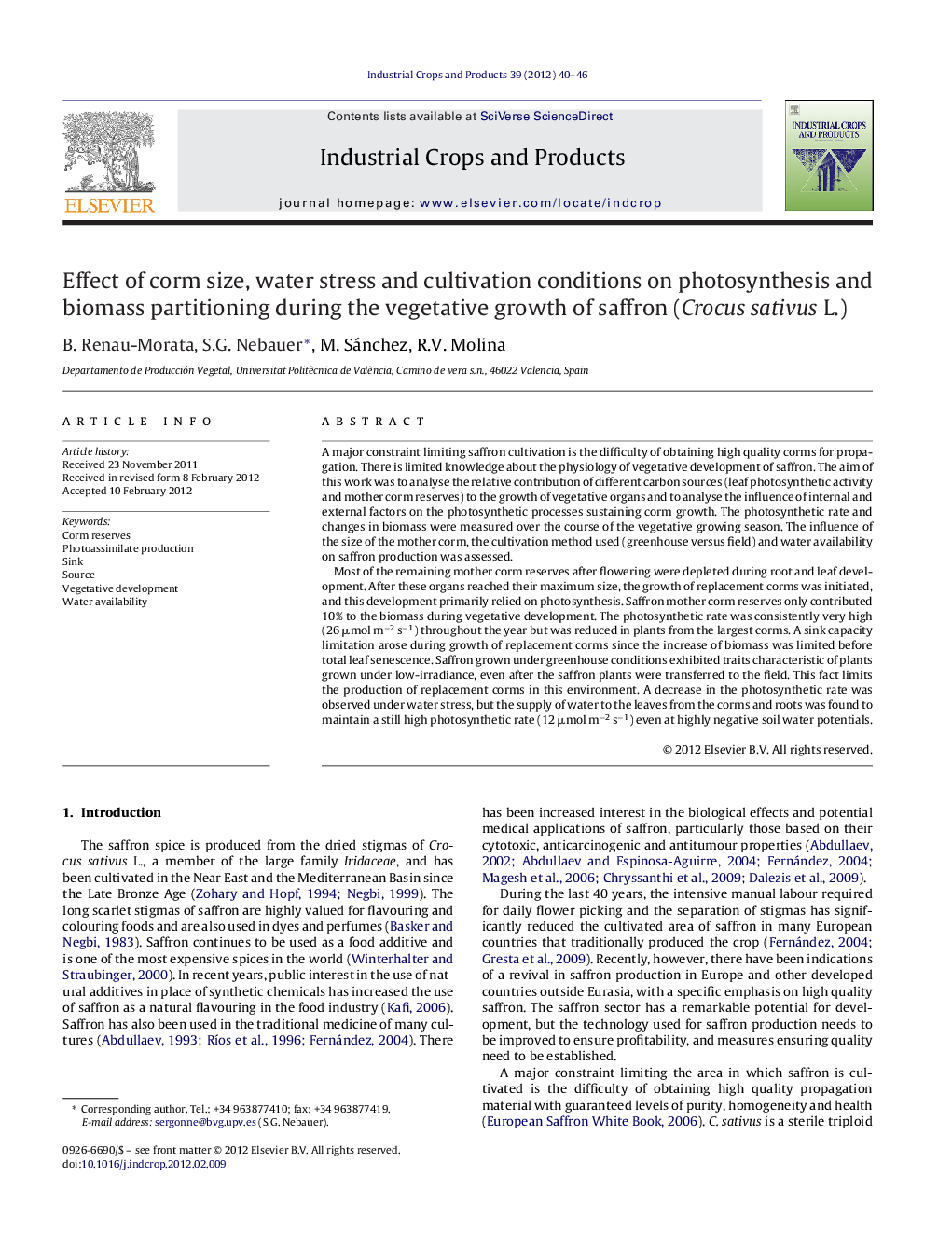| Article ID | Journal | Published Year | Pages | File Type |
|---|---|---|---|---|
| 4514312 | Industrial Crops and Products | 2012 | 7 Pages |
A major constraint limiting saffron cultivation is the difficulty of obtaining high quality corms for propagation. There is limited knowledge about the physiology of vegetative development of saffron. The aim of this work was to analyse the relative contribution of different carbon sources (leaf photosynthetic activity and mother corm reserves) to the growth of vegetative organs and to analyse the influence of internal and external factors on the photosynthetic processes sustaining corm growth. The photosynthetic rate and changes in biomass were measured over the course of the vegetative growing season. The influence of the size of the mother corm, the cultivation method used (greenhouse versus field) and water availability on saffron production was assessed.Most of the remaining mother corm reserves after flowering were depleted during root and leaf development. After these organs reached their maximum size, the growth of replacement corms was initiated, and this development primarily relied on photosynthesis. Saffron mother corm reserves only contributed 10% to the biomass during vegetative development. The photosynthetic rate was consistently very high (26 μmol m−2 s−1) throughout the year but was reduced in plants from the largest corms. A sink capacity limitation arose during growth of replacement corms since the increase of biomass was limited before total leaf senescence. Saffron grown under greenhouse conditions exhibited traits characteristic of plants grown under low-irradiance, even after the saffron plants were transferred to the field. This fact limits the production of replacement corms in this environment. A decrease in the photosynthetic rate was observed under water stress, but the supply of water to the leaves from the corms and roots was found to maintain a still high photosynthetic rate (12 μmol m−2 s−1) even at highly negative soil water potentials.
► A high photosynthetic rate supplies 90% to the biomass accumulation. ► Mother corm reserves only contribute 10% to the vegetative organs biomass. ► Photosynthetic rate is limited in plants coming from the biggest corms. ► Most favorable conditions for flower production does not optimize corm production. ► Water supply from corms and roots maintains a high photosynthetic rate under drought.
